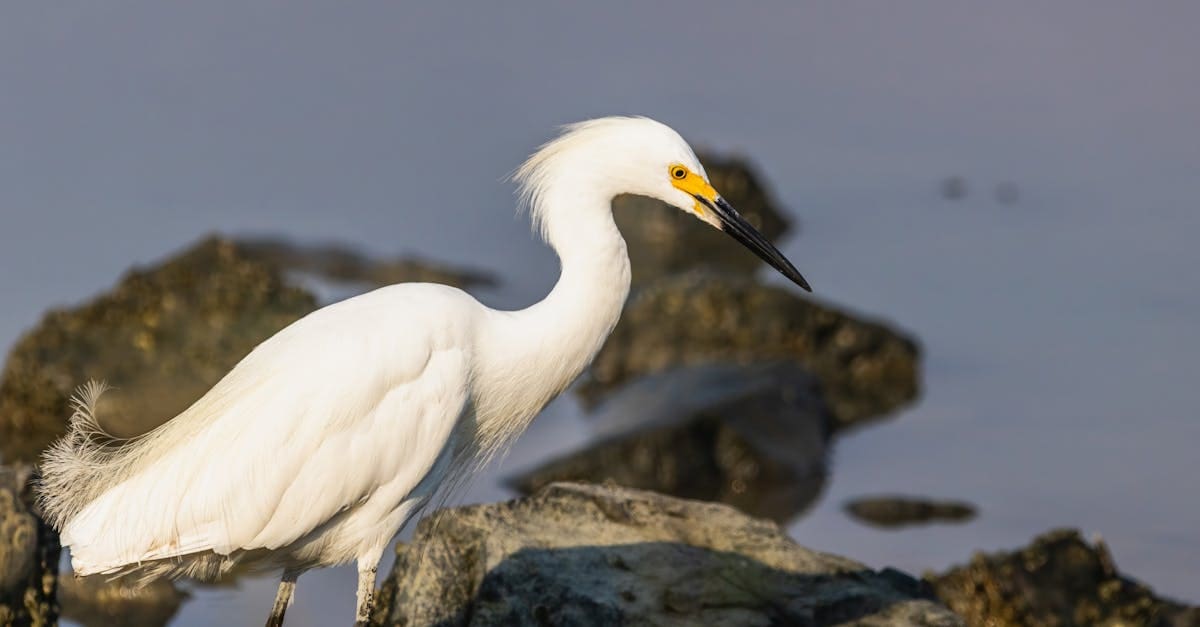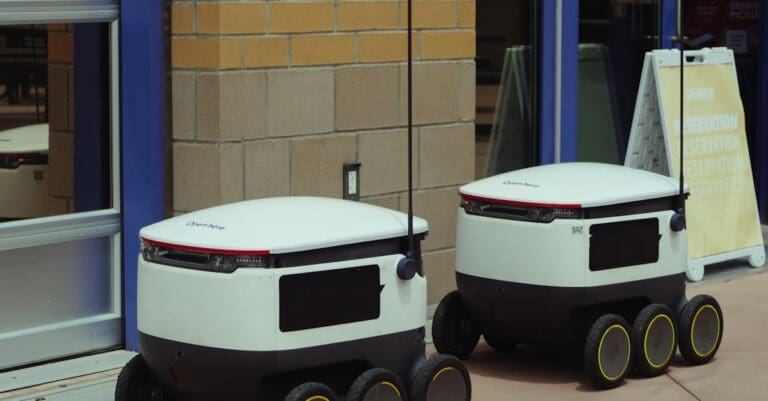How to Get More from Your AI Wildlife Conservation Efforts
Did you know that AI can analyze up to 3.6 million wildlife photos an hour, helping conservationists protect species more efficiently? I find it fascinating how AI wildlife conservation can revolutionize the way we protect our planet’s biodiversity. With the increasing challenges wildlife face, like habitat loss and poaching, it’s crucial to utilize modern technology. This post explores how AI helps in various areas, from species identification to habitat analysis, ensuring a more effective and sustainable conservation approach.
By automating many labor-intensive tasks through AI, conservation efforts become more cost-effective and scalable. AI tools like motion-triggered cameras and drones provide real-time data, enabling conservationists to make informed decisions. This not only aids in combating immediate threats but also supports long-term sustainability. I believe utilizing such advanced technology bridges the gap between traditional methods and the need for real-time solutions. Furthermore, the integration of AI models with satellite imagery and acoustic monitoring opens new avenues for tracking and protecting wildlife.
Intrigued by how AI can transform wildlife conservation? Discover practical solutions, insights, and how you can contribute to this vital cause by reading on.

In the article
- Enhancing AI Wildlife Conservation
- Innovations in AI Conservation Technology
- Implementing AI for Habitat Protection
- Role of AI in Species Recognition
Enhancing AI Wildlife Conservation
AI plays a crucial role in wildlife conservation. I have seen how technology like this helps in protecting various species and their environments. It’s not just about using technology for science; it’s about preserving life on Earth for future generations. AI helps conservationists make informed decisions, ensuring that resources are used effectively. Let’s discuss some specific ways AI is transforming the conservation field.
AI Biodiversity Monitoring
I’ve observed that AI significantly automates data collection and analysis, which is a game-changer for wildlife researchers. For instance, projects involving sensors, drones, and camera traps are increasingly common. These technologies not only capture vast amounts of data but also enable conservationists to understand patterns and behaviors of different animal species. This enhanced monitoring allows me to make more informed decisions about conservation efforts.
One of the key benefits is cost-effectiveness. With AI, manual tasks that once took countless hours can now be completed in a fraction of the time. I remember when identifying species from thousands of images used to take weeks. Now, with AI-driven tools, it happens in real time, freeing up resources for other important tasks. Therefore, AI is not only saving time but also reducing costs, which is crucial for long-term sustainability of conservation efforts.
AI Animal Tracking
Tracking endangered species has become more precise with the help of technology. Camera traps provide valuable data, allowing me to monitor rare and shy animals without disturbing them. These traps capture everything from images to movements, which are then analyzed using AI models. The accuracy and efficiency of this method enable us to make better conservation decisions.
Drones add another layer of monitoring, covering broader areas that are otherwise difficult to access. They assist in surveying wildlife populations over large landscapes. Just imagine the advantage of getting an aerial view of vast ecosystems! It’s like having eyes in the sky that never tire, always vigilant and ready to provide data that is crucial for understanding animal movements and potential threats.

Innovations in AI Conservation Technology
AI Poaching Prevention
AI is pivotal in preventing poaching, a severe threat to wildlife. Drones equipped with advanced detection capabilities patrol areas prone to illegal activities. They are like our unsleeping guardians in the sky, sending alerts whenever something suspicious is detected. This immediate response capability ensures that we can act quickly to counter poaching threats.
Additionally, cameras set up in strategic locations provide real-time alerts to conservation teams. These systems are so sophisticated that they can distinguish between animals and humans, allowing us to focus only on genuine threats. This technology not only saves animal lives but also helps us understand more about the poachers’ methods, which is invaluable for adapting our strategies accordingly.
AI Ecosystem Analysis
Integrating diverse data sources, AI provides comprehensive insights into ecosystems. I’ve found that this integration is key to understanding the complex relationships between species and their habitats. AI tools can predict changes in the environment and help us develop strategies to protect vulnerable areas. This knowledge aids in habitat protection and informs policy makers on the best actions to take.
With the ability to optimize resource allocation, I see how AI helps focus efforts on areas that will have the highest impact. Whether it’s monitoring species health or tracking biodiversity changes, these insights are invaluable. They guide us toward more effective conservation strategies, ensuring that our actions are as impactful as possible.
- Sustain biodiversity by preserving critical habitats and species.
- Optimize resource allocation to ensure efforts are targeted effectively.
Securing sustainable funding and volunteers is also vital. Public support is essential for any conservation initiative. I encourage more engagement through educational programs and awareness campaigns, facilitated by AI-driven data. This way, conservation efforts gain traction and maintain momentum over time.

Implementing AI for Habitat Protection
Using AI in habitat protection has revolutionized decision-making processes. I’ve noticed how AI tools aid in evaluating environmental data, allowing me to make informed decisions about managing natural resources. These tools continuously analyze data and provide real-time insights into habitat health, helping us identify areas that need urgent attention.
AI Wildlife Management
Streamlining processes is another benefit AI brings to wildlife management. By automating mundane tasks, conservation teams can focus on critical actions. I find this efficiency refreshing because it ensures our resources are used wisely. It also addresses biodiversity loss by providing insights that were previously hard to obtain.
Moreover, AI helps in managing resources by predicting potential environmental threats. By analyzing patterns, AI provides alerts on upcoming risks, allowing us to act proactively. This proactive approach is key to conserving biodiversity and ensuring ecosystems remain balanced. Additionally, resource management becomes more sustainable, which is vital for future conservation efforts.

Role of AI in Species Recognition
AI Species Recognition
AI enhances species recognition by using sophisticated algorithms to analyze images. I’ve seen how these technologies predict species identification with remarkable accuracy. By examining patterns and characteristics, they help confirm species presence, a task that previously required manual inspection. This accuracy not only helps in identifying species but also ensures that the data used is reliable and useful for conservationists.
Verification of data is another crucial aspect. By improving recognition capabilities, AI ensures that species data remains accurate and reliable. This improvement directly impacts conservation strategies, allowing better planning and execution. It transforms the way conservationists work, making their efforts more efficient and effective.
AI Conservation Technology
Monitoring wildlife with AI-driven solutions has changed traditional methods. I have seen the transformation firsthand, where manual processes have been replaced by automated systems. These systems provide continuous monitoring, which is paramount in protecting species. By giving us real-time data and insights, conservation efforts are more aligned with current challenges and needs.
Transforming traditional methods involves adopting technology that offers new perspectives. AI tools help conservationists adapt to changes, providing unique insights that were previously inaccessible. Through collaboration and innovation, AI empowers us to tackle challenges head-on, protecting our planet’s biodiversity effectively.
AI Environmental Protection
Effectively combating habitat loss is a major advantage of AI in environmental protection. By identifying changes in ecosystems, AI tools offer insights into how habitats are evolving. This information is crucial for adapting conservation strategies to meet new challenges. AI aids in understanding these trends, allowing I to develop better policies and actions to preserve habitats.
Maximizing AI Potential
Leveraging AI for 24/7 monitoring is perhaps its most promising aspect. With AI, there are no gaps in data collection, ensuring that conservation efforts are always supported by the latest information. This continuous monitoring allows me to address issues as they arise, maintaining a constant watch over ecosystems. As technology advances, I expect AI to play an even larger role in conservation, providing the tools needed to protect biodiversity for future generations.
Taking Action for Effective Wildlife Management
By understanding the many ways technology supports conservation, I can now see how crucial these advancements are for safeguarding nature’s wonders. With AI’s ability to track and analyze wildlife efficiently, identifying species, and monitoring habitats has become more accessible. These technologies not only enhance our ability to protect endangered species but also optimize resources to focus on high-impact conservation areas. My participation in these innovative efforts could be the key to ensuring thriving ecosystems for future generations.
As I reflect on the benefits presented, it’s clear that embracing these tools is an important step forward. By integrating motion-triggered cameras, acoustic monitoring, and drones, I can gain real-time insights into wildlife behaviors and potential threats. This data empowers me to make informed decisions that enhance conservation strategies. Therefore, I should consider collaborating with conservation organizations and support projects that harness these technologies to maximize their impact.
Now is the time for me to take action. Whether by sharing this information with others or actively participating in local conservation programs, my contributions can make a meaningful difference. By supporting initiatives that leverage AI technology, I help build a foundation for sustainable wildlife management. I encourage myself and others to explore these opportunities and take steps toward preserving biodiversity. Together, we can ensure a healthier planet by protecting its natural resources.







